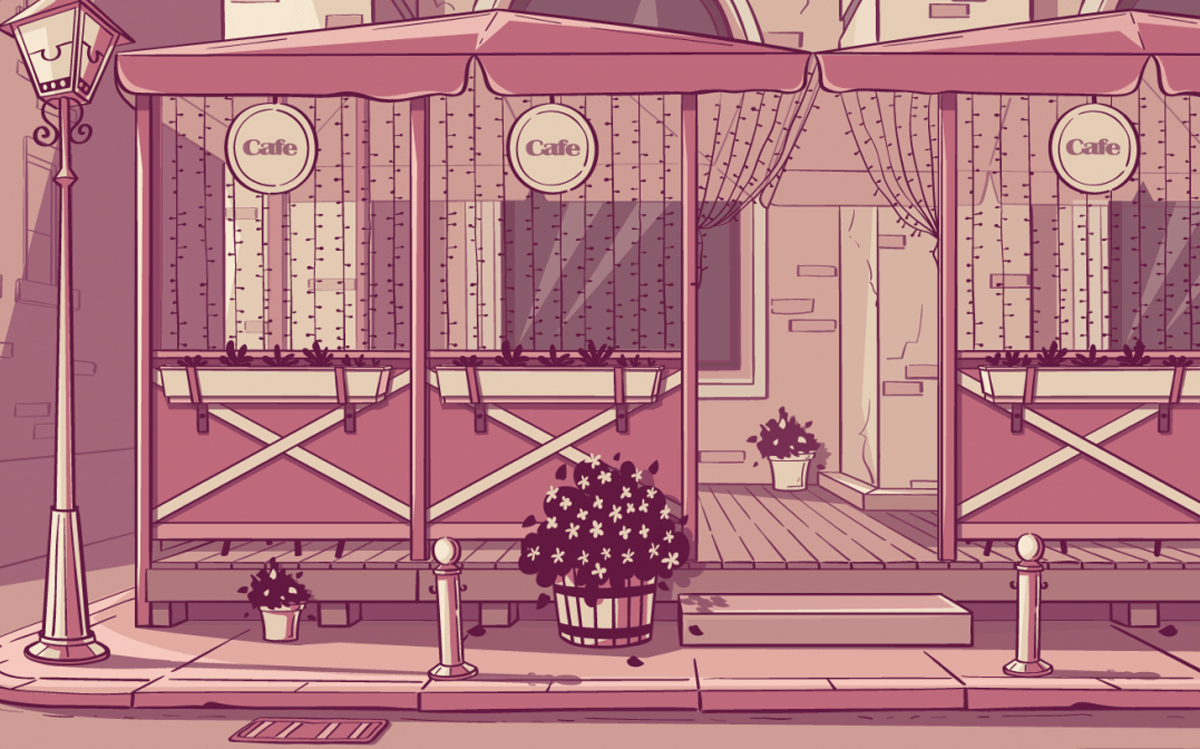Jack Frost is coming for the wave of al fresco dining and shopping sweeping across the nation. As many can attest, for some, he’s here already. Cold temperatures are turning ‘streeteries’ and ‘streetailers’ into ice boxes, threatening one of the last lifelines retail owners have to stay in business. Now nearly nine months into the pandemic, it’s become clear outdoor dining and shopping isn’t reviving business.
From the outset the idea seemed simple: allow businesses to use outdoor space to keep customers safe so they can stay open. In practice, providing outdoor dining, shopping and curbside retail has been anything but simple. Exhausting every resource they have to meet customers more than half way by providing outdoor spaces to patronize their business, most retailers and restaurateurs haven’t seen a significant boost to their chances of survival. Now both restaurants and retailers are forced to watch the encroaching cold freeze out their last chances of survival.
Read more



Retailers
Outdoor shopping hasn’t taken off. Customers aren’t keen on ‘streetailers’ it seems. NYC’s “Open Storefronts” program, modeled after the city’s popular outdoor dining program, has floundered. Less than 600 of the 40,000 eligible businesses have applied. Local shop owners say the program is too restrictive, only offering enough space for a few clothing racks, nothing like the street dining restaurants have been granted. Many shops had already been doing what the city formally sanctioned to no avail. Retailers face bigger issues beyond their doors than restaurants do. Shop owners are competing against some of the largest businesses in the world like Amazon and Walmart. Outdoor retail may never be good enough to compete against the comfort of shopping from home.
At the other end of the spectrum, in many large cities illegal vendors are already plying their wares on the street, a stiff form of competition in their own right. Extending their shop outside the store also means exposing themselves to greater loss potential by thieves eyeing an easy getaway. To keep wares secure more staff is required, an expense many small retailers can’t afford. In most cases the register is kept inside, requiring customers to enter the indoor space, questioning the efficacy of outdoor shopping to begin with. At least with outdoor dining, a staff member can bring you the bill. All these factors combine to make outdoor shopping a tough nut to crack for retailers, so many simply haven’t tried, saying it’s not worth the effort.
Retailers have found more success with curbside pickup as a coping mechanism than anything else. Buy Online Pickup In Store (BOPIS) is the fastest growing form of retail. More than 85 percent of shoppers have significantly increased curbside pickup orders compared to pre-COVID-19 rates, according to a new report from Incisiv. The problem is customers don’t really like curbside pickups either. More still prefer at-home delivery than BOPIS and the survey found the majority of customers rated their curbside pickup experience poorly. The unfortunate truth for retailers is that other than the biggest retailers like Target and major grocers, the promise of curbside remains unfulfilled. The same is true for food establishments. The only major stories of curbside success are from nationwide brands like Chipotle, Starbucks and Dunkin with enough financial muscle to make it happen. Logistic complications of curbside are simply too much for small businesses to handle. Legal access to the curbside, stock issues, pick up scheduling, missing items, and long waits times all contribute to a retail experience that leaves a bad taste for customers. Even mega retailers dedicating store space, parking lot space and millions of dollars in builds-out to accommodate curbside are struggling to provide a seamless experience.
Curbside won’t save small retailers because it’s giving big box stores a competitive advantage, leveraging their size and scale to role out logistics at a level only other large big box retailers can match. What could be a lifeline for small shops is another weapon in the omnichannel retail arsenal that large retailers are using to fight for their own lives against the even bigger fish in the sea. “In the immediate aftermath of the pandemic shoppers had little choice but to overlook friction in the online ordering and store pick-up experience—not anymore,” the Incisiv report said. “With continued growth in adoption expected over the next six months, shoppers will switch loyalties to retailers who offer more seamless experiences.”
Restaurants
Cities turning streets into restaurant patios was a literal and figurative breath of fresh air for the struggling restaurant industry. For most, it is not enough to survive. But it’s better than nothing. During the warm summer months this dining option turned into a moderate success, generating plenty of buzz among residents in larger metros. On average, full-service operators say 44 percent of their restaurant’s daily sales now come from on-premises outdoor dining, according to the National Restaurant Association. During the warmer summer months, outdoor dining in southern states was tampered by sweltering temperatures. Now with winter in full swing, Northern states are fighting against the weather. As the temperature has dipped, so have safety protocols and sales numbers.
Restaurants and eateries have begun putting up tents, erecting walls and windows to block wind, adding roofs to block inclement weather and doors to keep warmth in. Desperately trying to stay in business by helping customers avoid the cold, outdoor seating is rapidly turning into a series of igloos and ice-fishing huts. All around America restaurants are busy expanding their footprint past the curb, turning lots in some semblance of the indoors. Christmas lights, garland and bows for the holidays are the latest attempts to bring a little indoor charm to the streetside. Public health experts worry fighting the cold with structures and insulation are taking away key safety features of outdoor dining. Individual tents and igloos are favored by public health experts when trying to beat the cold as it makes it less likely to share ventilation with anyone outside your literal and figurative bubble.
“It’s probably better than being in a tightly enclosed space without any open windows in a bar, but it’s not being outdoors and in the sunlight either,” Dr. Megan Murray, an infectious disease expert at Harvard said. “To assume that because you’re in a tent you’re getting the same advantage as being outside, just because you’re cold, is not really correct.”
Making structural changes to outdoor dining is expensive for restaurants. Just putting up a roof over a patio can cost tens of thousands of dollars. If the pandemic is only temporary, it doesn’t make much sense to invest heavily in the type of safe, effective outdoor structures needed for mitigation. Even temporary solutions like tents can be cost prohibitive. Renting tents, chairs, tables and heating equipment for outdoor dining is costly, restaurants need a certain amount of customers to make the expense worth it. Even if the customers do come, the setups eat into margins already in the red. Changing orders from city and state governments make the decision even more difficult. Outdoor dining could soon be the only public form of dining, according to New York Governor Andrew Cuomo. Struggling businesses in California invested the last of their savings in updating their outdoor seating only to have it all shut down.
In America’s Golden State the issue of outdoor dining has taken on a story of its own. Temperature isn’t the issue, politics is. LA restaurants were ordered to drop outdoor dining to 50 percent capacity and follow a 10 p.m. curfew. Two weeks later, Los Angeles Mayor Garcetti shut it down altogether leading to viral videos from impacted owners. Other major municipalities across the state like San Francisco are following suit. Some restaurant owners are in open defiance of the order, some are protesting and others have figured out work arounds by reclassifying outdoor seating for dining as public seating areas. Despite having a year round climate suitable for outdoor dining, restaurant owners in LA must rely on take-out and delivery, which they insist is not enough to survive.
Winter is here
Outdoor dining and shopping aren’t saving businesses. At best, they’re slowing their decline. For big businesses with enough financial runway, the slowed descent may be enough to survive the landing. Before the pandemic retail and especially restaurants were industries of thin margins. Outdoor dining and shopping is hardly even a Band Aid. For small business owners, it’s the last remaining part of the ship above the water as it’s slowly dragged to the bottom.
The apocalypse has already hit the hotel and tourism industry. Outdoor dining and curbside shopping has been delaying the inevitable for retail and restaurants. As winter bears down, emergency federal funds dry up and the virus spread uncontrollably, what is normally the most prosperous season for retailers is quickly turning into its darkest. Credit cards maxed out and lines of credit ended, owners are running out of options. More than a 100,000 restaurants have closed in the last six months. More than 10,000 are expected to close in the next three weeks alone, according to the National Restaurants Association. The group’s most recent survey reveals 87 percent of full-service restaurants reported an average drop in revenue of 36 percent and 83 percent of owners expect sales to be “even worse” over the next three months as the virus continues to lash the United States and the temperature continues to drop.
“Three million restaurant employees are without a job, and the industry remains on track to lose $240 billion in sales by the end of the year,” the National Restaurants Association wrote in a bipartisan letter to lawmakers. “Perhaps most alarmingly, forty percent of owners surveyed say they are likely to close within six months absent government support.”
Retailers are faring even worse. The sector is rapidly becoming bifurcated as shoppers flock to nationwide brands. Retail spending may be up marginally but the benefactors have not been equitable. Some big box retailers have rallied during the pandemic but that has come at the expense of smaller stores. A Yelp study found that 800 small businesses per day are closing across the country. Due to how hard it is to track small business closures, that number is likely even higher. A study from UC Santa Cruz shows nearly 317,000 businesses closed between February and September. That’s closer to 1,500 closures a day. Six months from now you may not recognize your local retail strip center anymore.
Whether it’s the falling temperature or rising case numbers, more customers will be staying home indoors over the next few months, threatening the fragile prospects of small retail businesses entering their ninth month of toil. Barring additional federal assistance, the prospect of a vaccine is the last remaining hope for many stores and restaurants. Experts have predicted a surge in retail spending once the pandemic is behind us, the small retailers and restaurateurs that remain will need every cent. Weathering the winter with a hope for spring is a matter of life and death for many small businesses. The curb will not provide cover. Curbside retail and street dining may be here to stay, but they’re not here to save businesses. [Propmodo]




